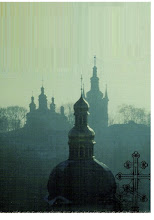I have discussed Suffolk Sandlands Detecting Tours based at Butley Abbey before on this blog. The detectorists involved are Andy Sampson - from Orford, John French from Suffolk, and Graeme Rushton from up North. They were all related to ITV's crass series "Great British Treasure Hunt" with Henry Cole.
A video shows some detecting on the "tour" with some serious misidentifications, the sprue of a bronze casting (note the BA hoard found apparently nearby) was called a "weight" and a Flavian coin is missnamed a "Jewponidus" [recte: dupondius].
.
Posted on YouTube by Unearthed Detecting TV May 12, 2025
. Some finds are shown being pulled from the ground and cleaned immediately on camera.
Without precise geolocation or stratigraphic recording, key contextual data (e.g., exact depth, soil composition, proximity to other items) will be lost. The film shows no documentation of this type being undertaken, at the end while a pile of loose objects is shown, none of any documentation done is displayed, suggesting documentation was not the most important part of the operation. The film raises concerns about documentation standards, potential for incomplete recovery and recording, risk of missed smaller or fragile artifacts. The team mentions they suspected more items were present and are recovering them piecemeal.
In line with current detecting lore, the fragmentation of the items in the hoard is mentioned, bolstering the "it's only in the ploughsoil" narrative, some artifacts are described as broken due to modern ploughing. Some of this looks to me to be ancient damage. Let us hope when this is professionally recorded the FLO looks at this evidence objectively and honestly (after all the ancient damage is an archaeological feature of the deposit).
Since so many UK Bronze Ages (and Iron Age) hoards are being recovered through metal detecting, time is well-overdue for a good long look at the actual archaeological effects of this manner of discovery, particularly the suitability of the masses of material being recovered ad hoc like this instead as a result of more controlled and fully documented excavation for the kind of work currently being carried out on the continent on excavated assemblages.











No comments:
Post a Comment